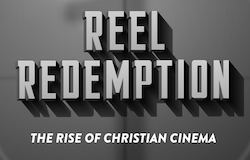21. It’s a Wonderful Life
3 Jul
dir. Frank Capra
Once upon a time, we were sold on the American Dream, a lofty, fairy tale concept that convinced anyone willing to buy into it that they could achieve anything they strived for as long as they worked hard for it. George Bailey wanted to believe in it. Americans post-World War II waned to believe in it. We all want to believe in it. That doesn’t necessarily mean that Capra and It’s a Wonderful Life believe in it. Critically and commercially ignored upon its release, It’s a Wonderful Life gained its status as a classic decades later in TV syndication around Christmas, a time of year when idealism is at its peak. That’s not to imply that there’s anything contradictory about the season with which the film has become synonymous, but rather that the hope and good cheer associated with bot the holiday and the film are destinations at which we arrive after a long, arduous journey rather than inherent constants. Like we all gradually do, George Bailey discovers that the American dream isn’t so much a dream as it is a system, and that the system asks much of its participants including pain, compromise, and sacrifice. The remarkable prescience and gravity of George’s trials remains relevant decades later because of the emerging complexities in its characters and story as well as the universal truths that find resonance in both sides of an increasingly partisan political landscape: conservatives can appreciate a small business owner who strives to provide for his family, whereas liberals can appreciate a motley community refusing to cower to the whims of the 1%. It’s a film that morphs and caters its appeal across generations and just so happens to ring most true at a time when connections across boundaries are more important than ever.




No comments yet